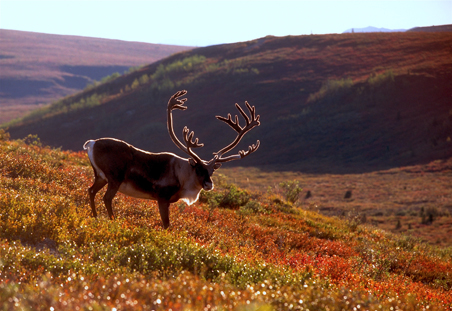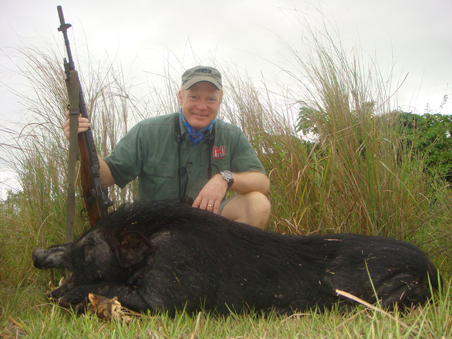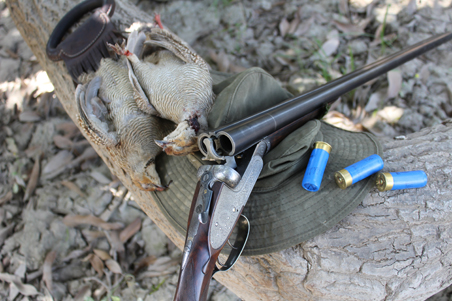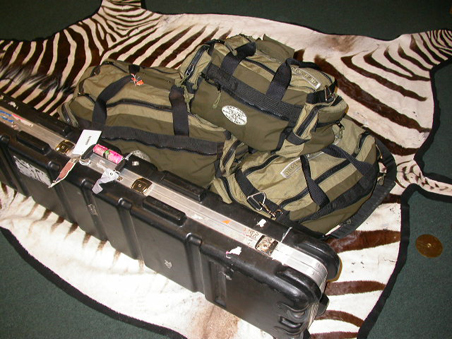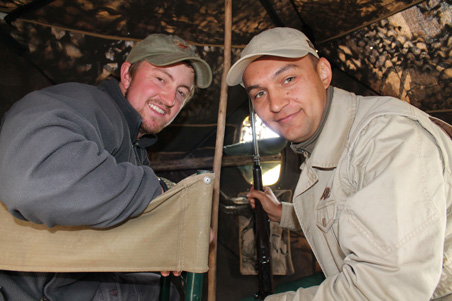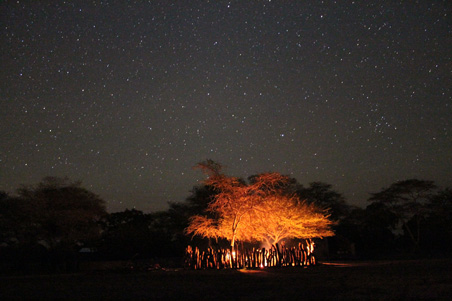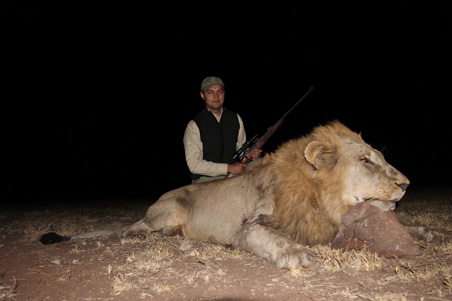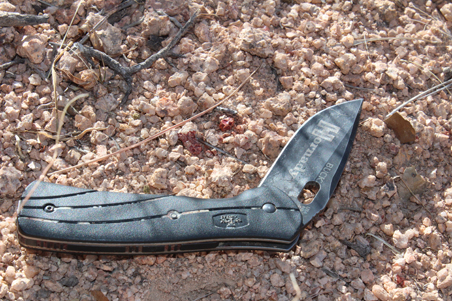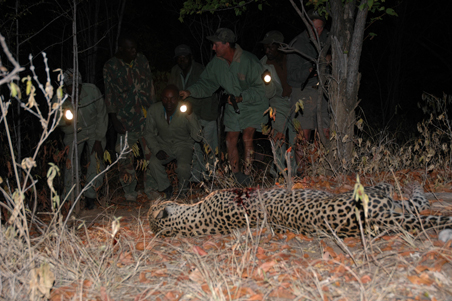Zimbabwe is struggling with an overpopulation of elephants in many areas, despite media reports to the contrary and public hysteria over the issuance of export permits for legally hunted animals. Photo by Denver Bryan/Images on the Wildside
Elephants in Zimbabwe are under threat from the very efforts intended to “save” them.
In the March issue of Sports Afield we looked at the story behind the U.S. Fish & Wildlife Service’s (FWS) decision on Zimbabwe elephants under the Endangered Species Act (ESA) in late 2017. The finding—that legal hunting will enhance the survival of elephant there–should have allowed American hunters to import elephant trophies once again, but the White House responded to the media firestorm by putting permits on hold.
The landscape has changed somewhat since then. In response to a DC Circuit Court decision, the FWS withdrew all country-wide enhancement findings in a March 1 memorandum, stating that permits for elephants, lions, and other listed species would be considered on a case-by-case basis. That means permits should, once again, be a go, but none have been issued.
Now is a good time to look at the gulf between the priorities of FWS and those of the Zimbabwe Parks and Wildlife Management Authority (ZPWMA), which faces complex elephant management issues that vary from region to region.
The FWS treats trophy hunting of elephants as though it were a key part of species management, lumping it in with other offtakes. In reality, hunting quotas are a fraction of a percent and the few elephants killed by hunters have no effect on the biological status of elephants in Zimbabwe. Zimbabwe’s expensive efforts to address the FWS import suspension have mainly distracted from what should be a more important issue: the fact that three of the country’s four elephant subpopulations are considerably larger than ZPWMA wants them to be.
Ecologist and wildlife consultant Rowan Martin worked for what is now ZPWMA from 1972 to 1997, also serving as Zimbabwe representative to CITES. According to Martin, much of the country’s protected woodland areas are paying a price for continued inaction over high elephant densities.
Says Martin, “Canopy woodlands begin to disappear when elephant densities exceed one elephant to five square kilometers, and the worst problems are in Matebeleland North. Hwange National Park itself is an ‘eco-slum,’ with over 45,000 elephants at a density of 3 per square kilometer. There has been an increasing migration of elephants from the park into neighboring safari areas (rather negating the hypothesis that elephants would seek haven from trophy hunting in the park) and Matetsi now has some 5,000 elephants at 1.1 per square kilometer.
“There is considerable vegetation damage in the Lower Zambezi Valley, which consists almost entirely of hunting areas, including communal CAMPFIRE areas. Despite the high level of illegal hunting taking place, elephant densities are still unacceptably high (0.7 per square kilometer). Elephants in the Southeast Lowveld, including Gonerezhou National Park, have reached densities exceeding 2 per square kilometer, causing widespread habitat degradation. Incredibly, Zimbabwe received a congratulatory message from FWS for the ‘good news’ that the park population had reached 12,000 elephants.”
Martin notes that biological species management and management for trophy game are separate matters, a point that seems to confuse FWS. “In the 2014 finding that started the suspension, they wrote ‘In order to manage any population to ensure an appropriate population level and determine whether sport hunting is having a positive effect, it is vital to have sufficient data on population numbers and/or population trends to base management decisions.’ This is incorrect. With adaptive management, sport hunting can be managed indefinitely using the feedback from trophy quality (e.g. mean tusk weight) to increase or reduce quotas. If trophy hunting is benefitting the population, it doesn’t matter what the biological status of the population is.”
Because of the ESA’s demand that hunting enhance the survival of the species, FWS has developed a fixation with high numbers and an obsessive concern with offtake. But concerns about elephant densities and the health of the ecosystem as a whole largely glossed over. Populations are artificially high in national parks, largely because of pumping that maintains water pans throughout the dry season.
Rose Mandisodza-Chikerema is the chief ecologist for ZPWMA, and oversees research and management across Zimbabwe. She confirms that Zimbabwe wants to address the high elephant populations, particularly in Matabeleland North.
‘There is an overabundance of elephants, and the biggest effect is modification of the habitat. Another impact that you also have is a decline in plains game species like giraffe, impala, and zebra. For example, game count results in northwest Matabeleland show increasing elephant and declines in a number of herbivore species.” Mandisodza-Chikerema says that there may have been even more marked declines in antelope during the rapid elephant growth after Zimbabwe halted culling programs in the late 1980s.
Despite this, current plans don’t involve culling elephants. “We may translocate some animals to areas like those in Sebungwe and the Lower Zambezi Valley, says Mandisodza-Chikerema. There may also be some live sales, not to manage the population, but to raise funds. In areas like northwest Matabeleland we may look at the option of closing some of the waterpoints.”
Mandisodza-Chikerema notes that culling would only be a temporary solution, because the artificial water holes allow the elephant population to rebound rapidly.
Vernon Booth is a freelance wildlife consultant who began his career as an ecologist with the ZPWMA, working in the Matetsi for thirteen years beginning in 1979. He says that the park is heading toward a critical juncture.
“What’s happening in the region now is the same thing has happened in Chobe National Park in Botswana, where the only trees left are miombo and other unpalatable species. In Chobe you still have buffalo in the floodplains, but virtually all antelope have taken flight. It’s an insidious and slow process. There isn’t a lot of hard data on the effects on other species, but impacts are visible. The area around Sinamatella Camp in Hwange was called ‘Impala Park’ with 200 impala per square kilometer in the 1980s, and now impala are virtually absent. That’s to say nothing of what’s happening to reptiles, insects, and other animals. No one knows. The big problem is the water pan pumping. I think somewhere along the line that population is going to keep growing and growing and we’re going to a situation like in Tsavo in Kenya on our hands, where much of the wildlife dies off.”
A fierce debate burns about whether there can be “too many elephants,” with some biologists arguing that elephant-dominated landscapes are part of a natural cycle that took place in the pre-colonial era. There are, however, very few protected wildlife areas in Africa that don’t have permanent artificial waterpoints within close proximity, causing elephants to complete dominate the landscape. Recent research has turned to waterpoints, suggesting that woodland biodiversity may be maintained if permanent pans are better managed. Waterpoint management may prove to be an effective strategy for Zimbabwe in curbing biodiversity loss. If so, elephant numbers will drop, a point that the international community should be willing to accept.
For hunters and wildlife managers, the bottom line is that elephant populations have exploded in much of Zimbabwe, and there is no reason why the country should continue to go without key revenue from elephant hunting. Says Mandisodza-Chikerema, “In some ways we have been punished for conserving our elephants while other countries have been less sucessful. FWS has treated the country unfairly by not allowing Zimbabwe to see the rewards from its successes.”
While revenue from trophy elephants may not make or break ZPWMA, it may tip the scales for communal wildlife areas in the CAMPFIRE program, some of which have already turned hunting areas to other uses, such as farmland. This means compressing elephants in ever-smaller spaces.
Whatever the good intentions of the FWS, the fixation on numbers and data around a few charismatic species will continue to obscure difficulties facing ecosystems in Africa. These problems are local in nature, and poorly served by the broad strokes of ESA policy.
In mid-March, Secretary of the Interior Ryan Zinke issued a statement on Twitter saying, “Let’s be clear: Since the President’s statement, we have not issued a single permit for elephant trophies. We support the President’s policy.” Zinke seemed to be referring to Trump’s November tweet putting permits on hold. It is not known when, or if, this policy will change. It clearly isn’t based on science, as ESA policy is supposed to be.
When the ESA is being controlled by political whims, it’s time for the U.S. to walk back our outsized influence on wildlife management in African countries.

 He was born in Tucson on September 30, 1936, and attended schools in Yuma before returning to Tucson in 1954 to enroll in the University of Arizona’s College of Business and Public Administration. After graduating with a Bachelor of Science in Marketing, he was employed in the advertising divisions of Levy’s and Jacome’s department stores, and at local advertising and public relations agencies. He founded and published Arizona Outdoor News, a regional newspaper covering Arizona’s hunting and fishing opportunities, for three years in the 1960s.
He was born in Tucson on September 30, 1936, and attended schools in Yuma before returning to Tucson in 1954 to enroll in the University of Arizona’s College of Business and Public Administration. After graduating with a Bachelor of Science in Marketing, he was employed in the advertising divisions of Levy’s and Jacome’s department stores, and at local advertising and public relations agencies. He founded and published Arizona Outdoor News, a regional newspaper covering Arizona’s hunting and fishing opportunities, for three years in the 1960s.